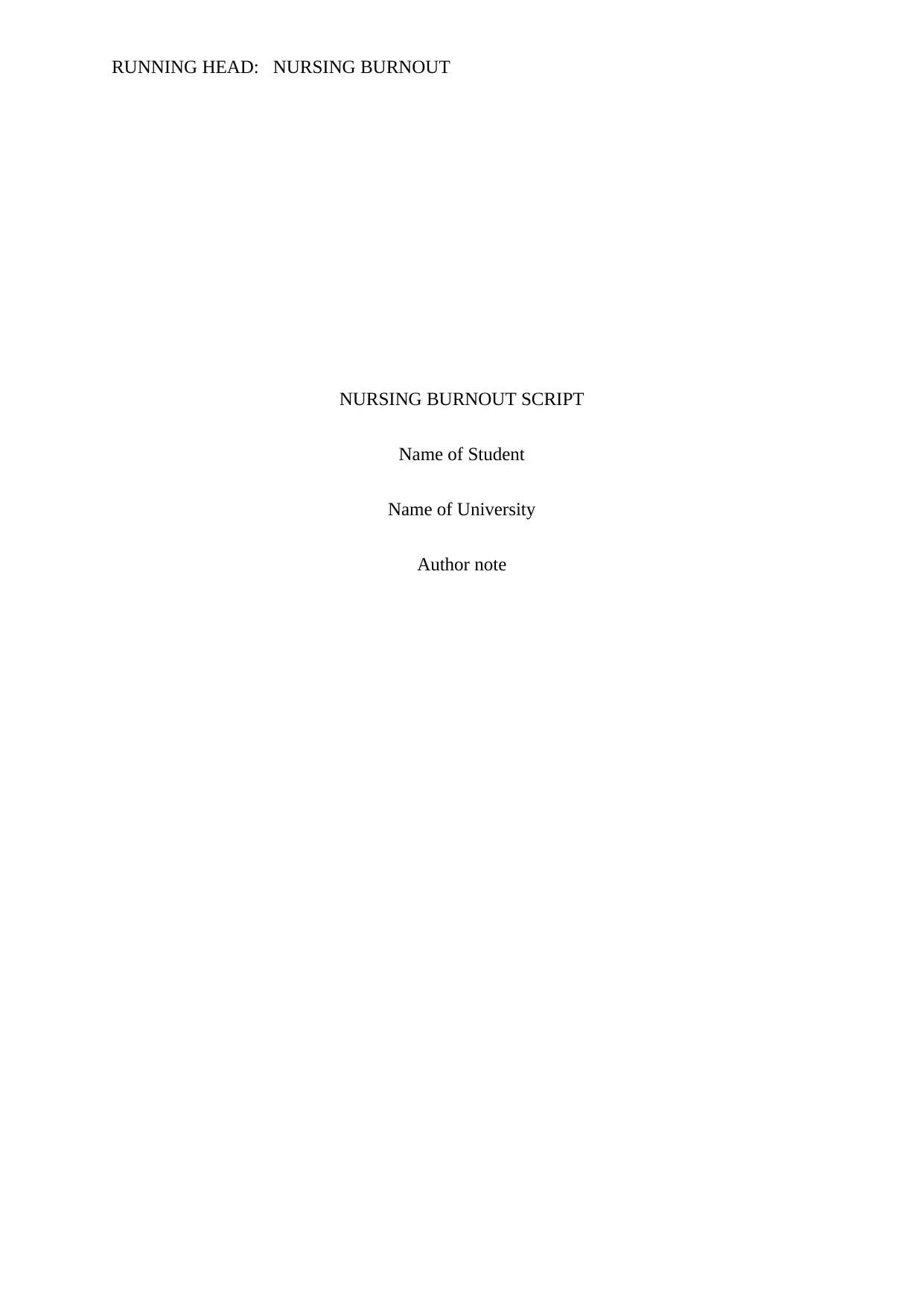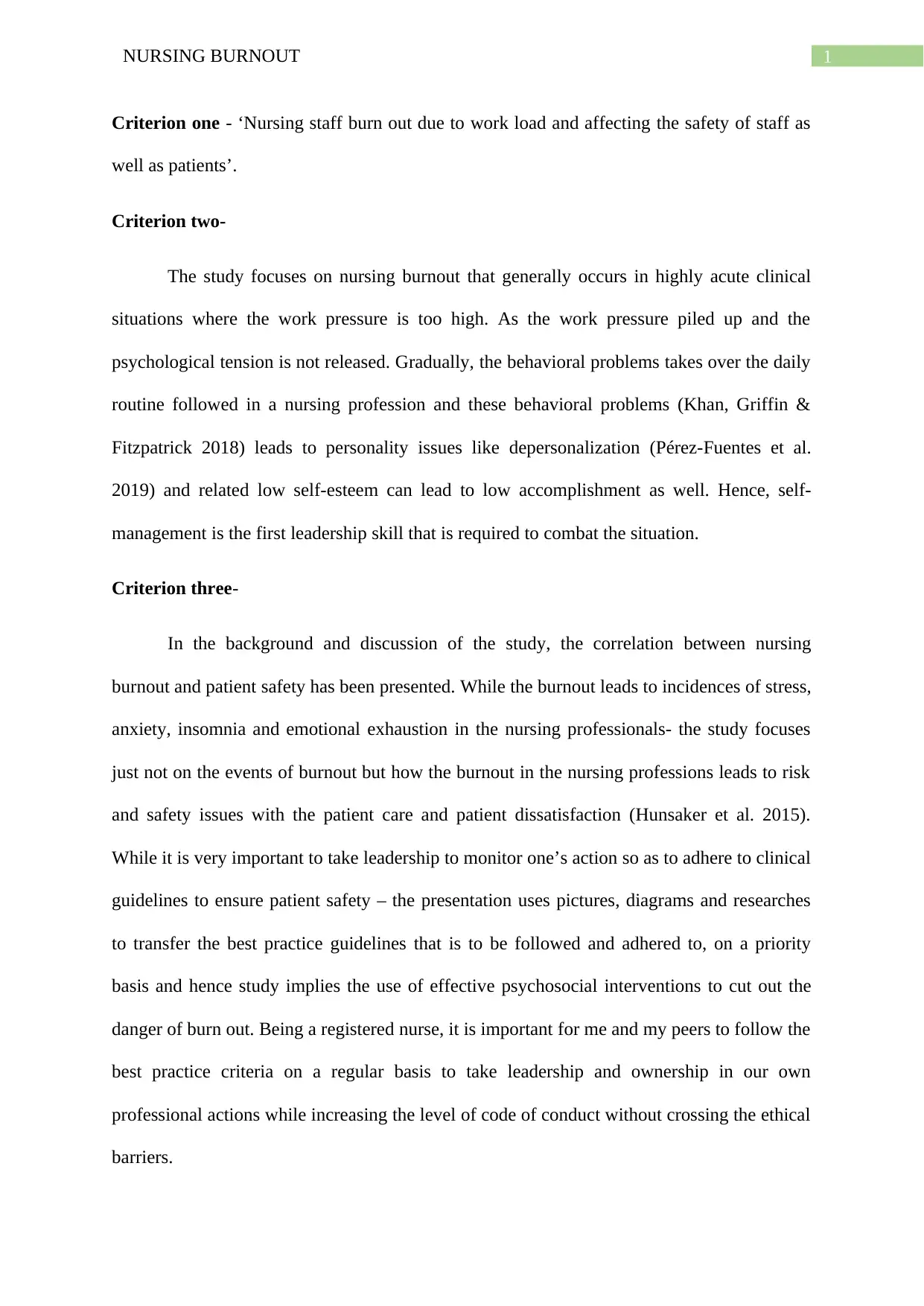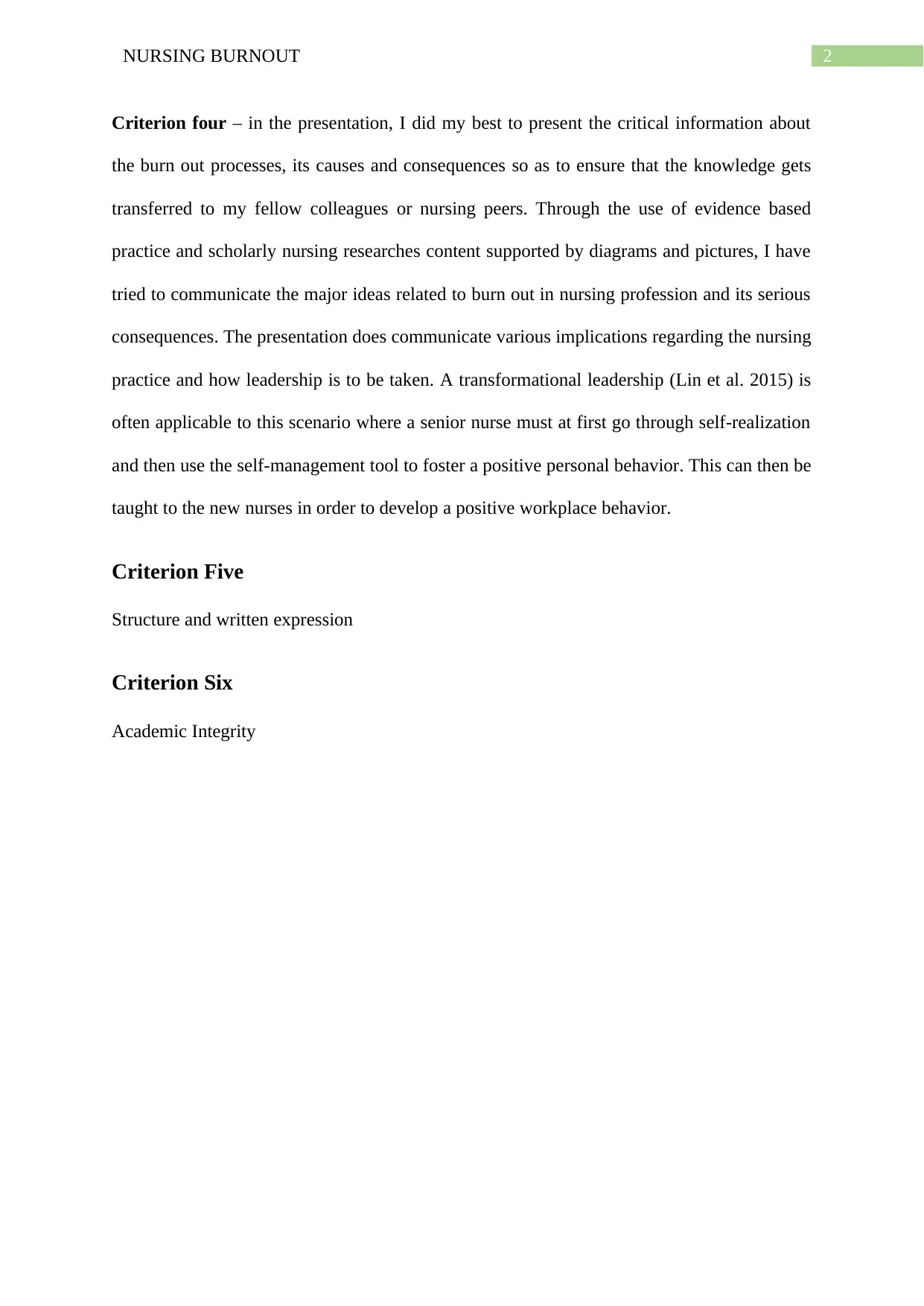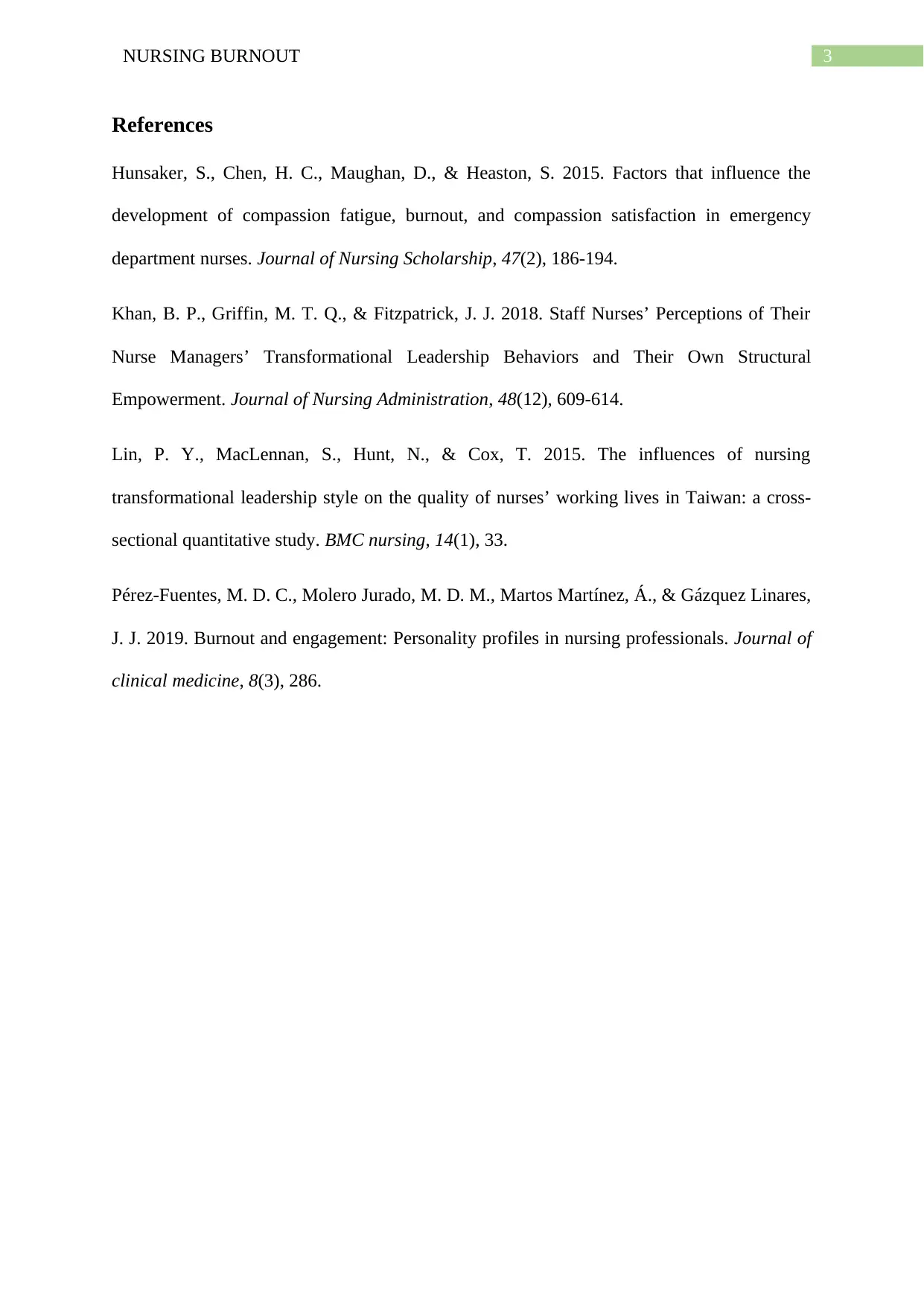Nursing Burnout in Acute Care: Impact on Patient Safety and Leadership
VerifiedAdded on 2022/10/19
|4
|719
|10
Presentation
AI Summary
This presentation addresses the critical issue of nursing burnout and its impact on patient safety within acute care settings. It examines the causes of burnout, including heavy workloads and psychological stress, and explores how these factors lead to behavioral problems, personality issues like depersonalization, and reduced self-esteem. The presentation emphasizes the correlation between nursing burnout and patient safety, highlighting the increased risks associated with stress, anxiety, and emotional exhaustion. It advocates for the use of effective psychosocial interventions and transformational leadership to mitigate burnout, improve patient care, and adhere to ethical guidelines. The presentation also provides evidence-based practices, scholarly research, and diagrams to communicate key ideas about burnout in the nursing profession, and its implications for nursing practice and leadership.
1 out of 4










![[object Object]](/_next/static/media/star-bottom.7253800d.svg)